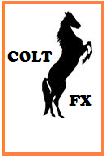 The 16-country currency unit then came under some pressure after Moody’s downgraded the outlook for Greece’s government bonds from ‘positive’ to ‘stable’. The downgrade was far from being a surprise and although the euro weakened, support held at 1.27. There was more bad news out of the US on Thursday, with new unemployment claims, durable goods orders and new home sales all coming in worse than expected. Friday saw a higher than expected EU unemployment rate and lower than expected consumer inflation add to the already powerful arguments for an ECB interest rate cut next Thursday (March 5th) and EUR/USD pushed below 1.27. The pair fell further to test 1.26 on the news that the US GDP had shrunk by an alarming 6.2%. This was the sharpest contraction since 1982 and fuelled fears that the White House’s projections for economic recovery are a tad too rosy. EUR/USD closed the week at 1.2676.
The 16-country currency unit then came under some pressure after Moody’s downgraded the outlook for Greece’s government bonds from ‘positive’ to ‘stable’. The downgrade was far from being a surprise and although the euro weakened, support held at 1.27. There was more bad news out of the US on Thursday, with new unemployment claims, durable goods orders and new home sales all coming in worse than expected. Friday saw a higher than expected EU unemployment rate and lower than expected consumer inflation add to the already powerful arguments for an ECB interest rate cut next Thursday (March 5th) and EUR/USD pushed below 1.27. The pair fell further to test 1.26 on the news that the US GDP had shrunk by an alarming 6.2%. This was the sharpest contraction since 1982 and fuelled fears that the White House’s projections for economic recovery are a tad too rosy. EUR/USD closed the week at 1.2676.Cable spent the first two days ranging between 1.46 and 1.44. On Wednesday, UK GDP for Q4 2008 came in at -1.5%, the steepest contraction since 1980 and the pound started to weaken. It broke down support at 1.44 and came under further pressure when BoE policy maker David Blanchflower said that the UK’s recession will probably deepen “significantly”; adding that there were no signs of recovery as yet. The Bank of England is due to announce new interest rates on Thursday and a further cut looks very much on the cards. GBP/USD fell to test support at 1.42 until recovering to 1.4350. Bad news out of the US brought more support to the greenback and saw cable hitting a low of 1.4109 until rising to close at 1.4315.

Calendar Notes
It’s a big week next week and your mantra should continue to be buy the dollar on bad news and sell it on good.
Stateside, the big day is Friday, which has top market movers Non-Farm Payrolls and the unemployment rate in the mix (both at 13:30). As a run up to this, we’ve got the ADP job numbers on Wednesday (13:15) and Thursday’s weekly unemployment change data (13:30). Other releases to be aware of include are Monday’s and Wednesday’s PMI stats (both at 15:00) and Tuesday’s pending home sales (15:00). I’ll also be watching Ben Bernanke testify to the US Senate on Tuesday (15:00).
As I write this (Sunday March 1st), European leaders are holding a crisis summit aimed at preventing the crisis causing deep rifts within the EU. Keep an eye on the news for announcements from the summit before markets open this evening.
The ECB will be making its interest rate announcement on Thursday (12:45). After January’s cut, ECB chairman Jean-Claude Trichet almost promised a cut in March. The arguments for a cut have been mounting since then, so a cut of 50bps is widely anticipated. The follow up press conference (13:30) triggers a lot of volatility as Jean-Claude drops hints about future policy, so take care. In the run up, Monday sees euro-zone manufacturing PMI (09:00), and consumer price inflation (10:00). Wednesday has the zone’s services PMI (09:00) lined up, while early Thursday morning brings German retail sales (07:00) and the revised euro-zone GDP (10:00).
The Bank of England is also making its interest rate announcement on Thursday (12:00). It will be releasing PMI data throughout the week (manufacturing on Monday; construction on Tuesday and services on Wednesday – all at 09:30). There’s more news from the ailing UK housing market this week with the Halifax HPI. Friday sees the UK’s producer price index (PPI at 09:30), bringing insight into price changes in Britain.
EUR/USD: support @ 1.2512, resistance @ 1.2900.
USD/JPY: support @ 95.80, resistance @ 100.00







No comments:
Post a Comment